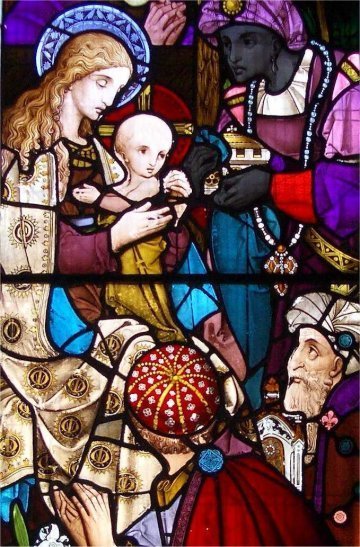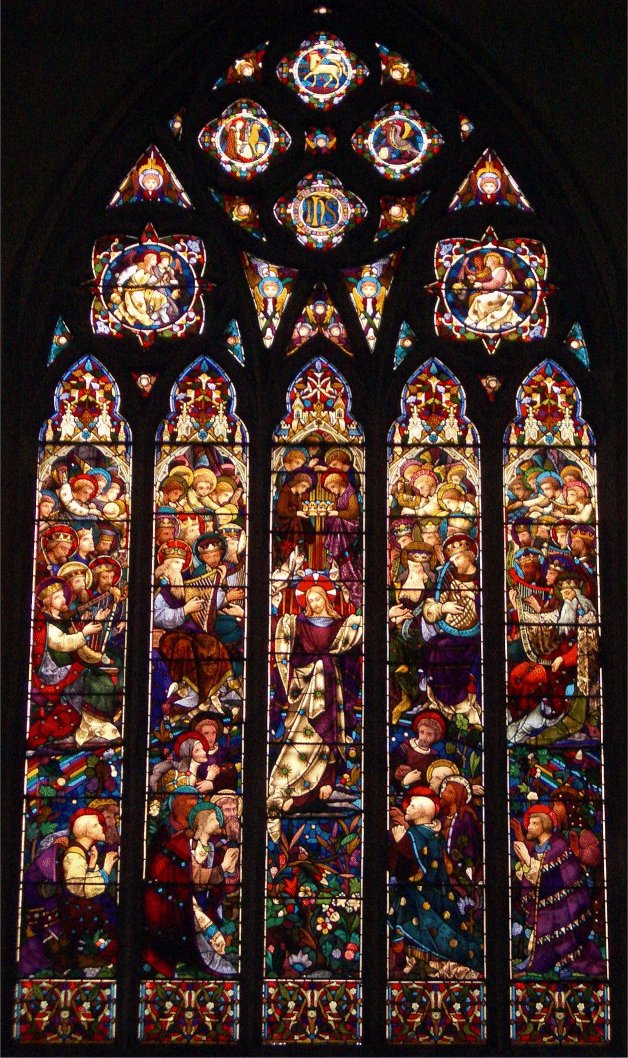 The main east window above the altar "Christ in Majesty". This window was designed and made by Heaton, Butler & Bayne, the leading stained glass manufacturer of the day, with Robert Bayne the designer. The window was donated by subscription from the congregation in 1864. It depicts "Christ in Majesty" surrounded by saints and the heavenly host.
We see Jesus being crowned on his return to heaven, having accomplished his mission on earth.
Jesus takes the central place, surrounded by angels above and the elders, wearing crowns, as described in the book of Revelation.
The apostles are gathered to witness the ascension of Jesus.
Amongst them you will see Mary, his mother, with the beloved apostle, John.
As Jesus had died on the cross, he commended Mary and John to care for each other when he was gone.
Note the rainbow between heaven and earth, which has always been a symbol of God's blessing.
Also, the cloth of Jesus' robe, which is the same as the one his mother is wearing at the cross in the Lady chapel window.
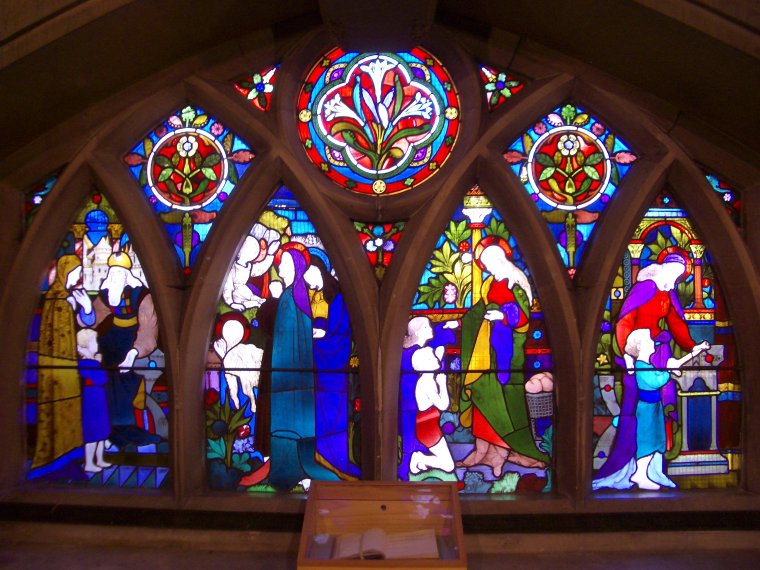 The window in the baptistry (West end) 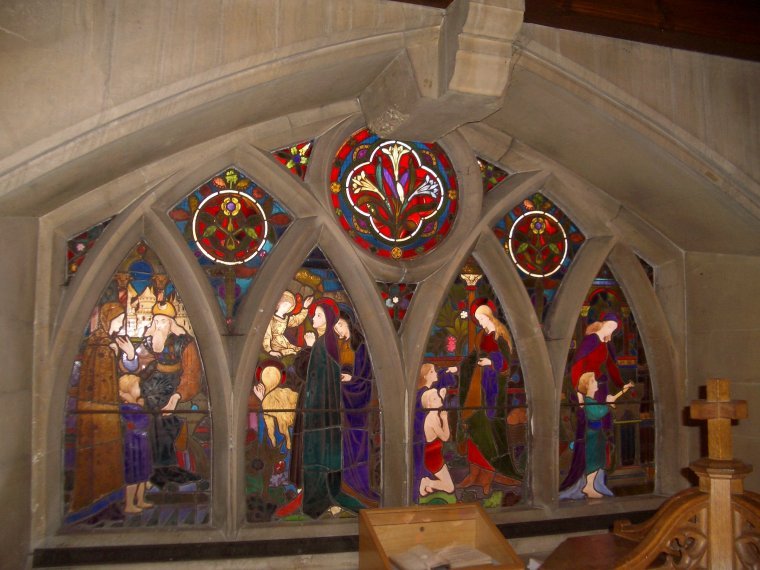 Another view of the baptistry window with different lighting (West end) This window was a gift from G. F. Doubleday in 1864. He was a wealthy local brickmaker who lived on the diagonally opposite corner to the Vicarage in a house called "Arundel". This window was also designed and made by Heaton, Butler & Bayne and designed by Robert Bayne. The subject of the window is "Motherhood", and we see Mary as the mother caring for the child Jesus. At the top is a spray of lilies frequently users as a symbol of Mary. The four panels, from left to right:
 The "Harding" side window in the north aisle by Veronica Whall dating from 1948. It depicts the Good Shepherd with angels. It commemorates Edward Arthur Harding who died in a flying accident in 1946.
 The "Memorial" side window in the south aisle dating from 1949, also by Veronica Whall depicting Jesus stilling the storm and has 1939-1945 in the lower panel. The scroll is a quotation from Isaiah 2.4 "and they shall beat their swords into ploughshares... neither shall they learn war any more" The left panel shows a blacksmith beating a sword into a ploughshare, and the right panel is a harvest scene. 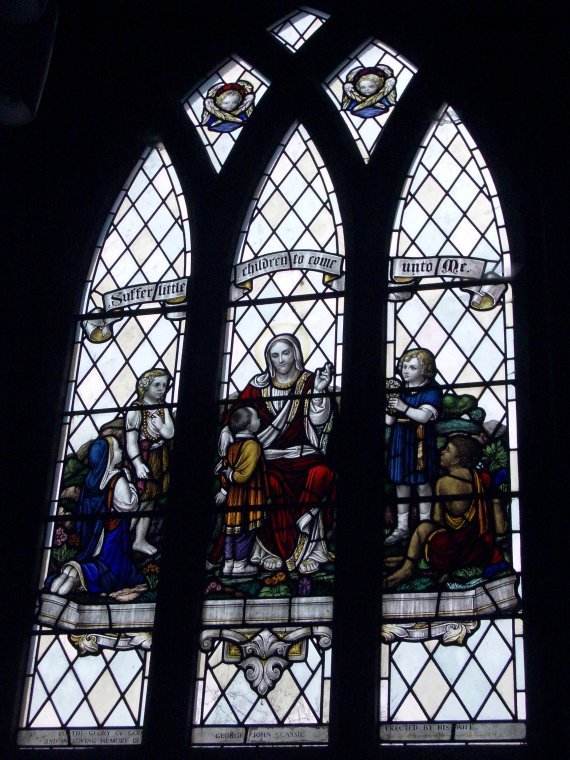 The North Transept window "Suffer little children". This window was made by G. Maile & Sons and designed by Arthur Walker in 1951 and is in memory of George John Cassio.
 The South Porch window, showing the Publican and Pharisee, is immediately opposite the main door. An original Heaton, Butler & Bayne window, designed by Robert Bayne in 1866.
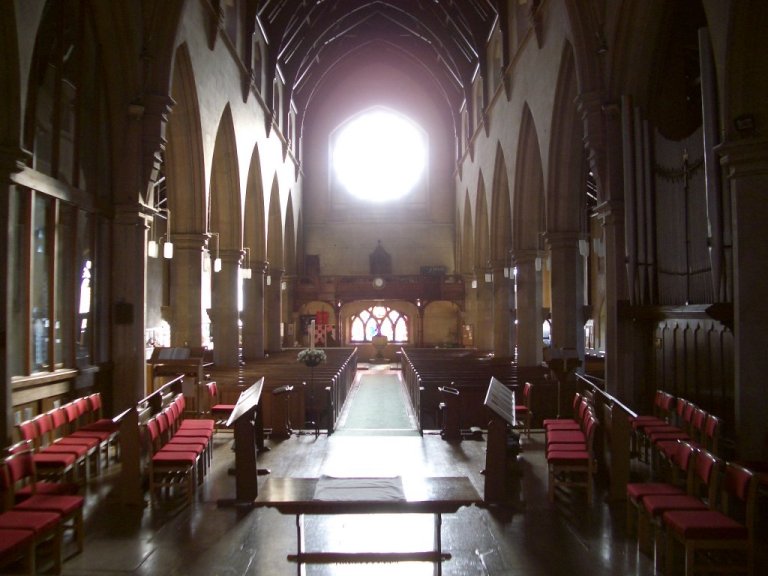 The West Rose window is plain glass, but can shed a very bright light throughout the church |
- The stained glass windows at St. Mary's Osterley were featured in a film made in 2000 by American documentary film maker Karl Krogstad, narrated by Burl Barer. There is an extract here which features St. Mary's windows at 1'42" and this extract is from the very end of the film, concluding that the windows at St. Mary's are one of the best examples of their type.

